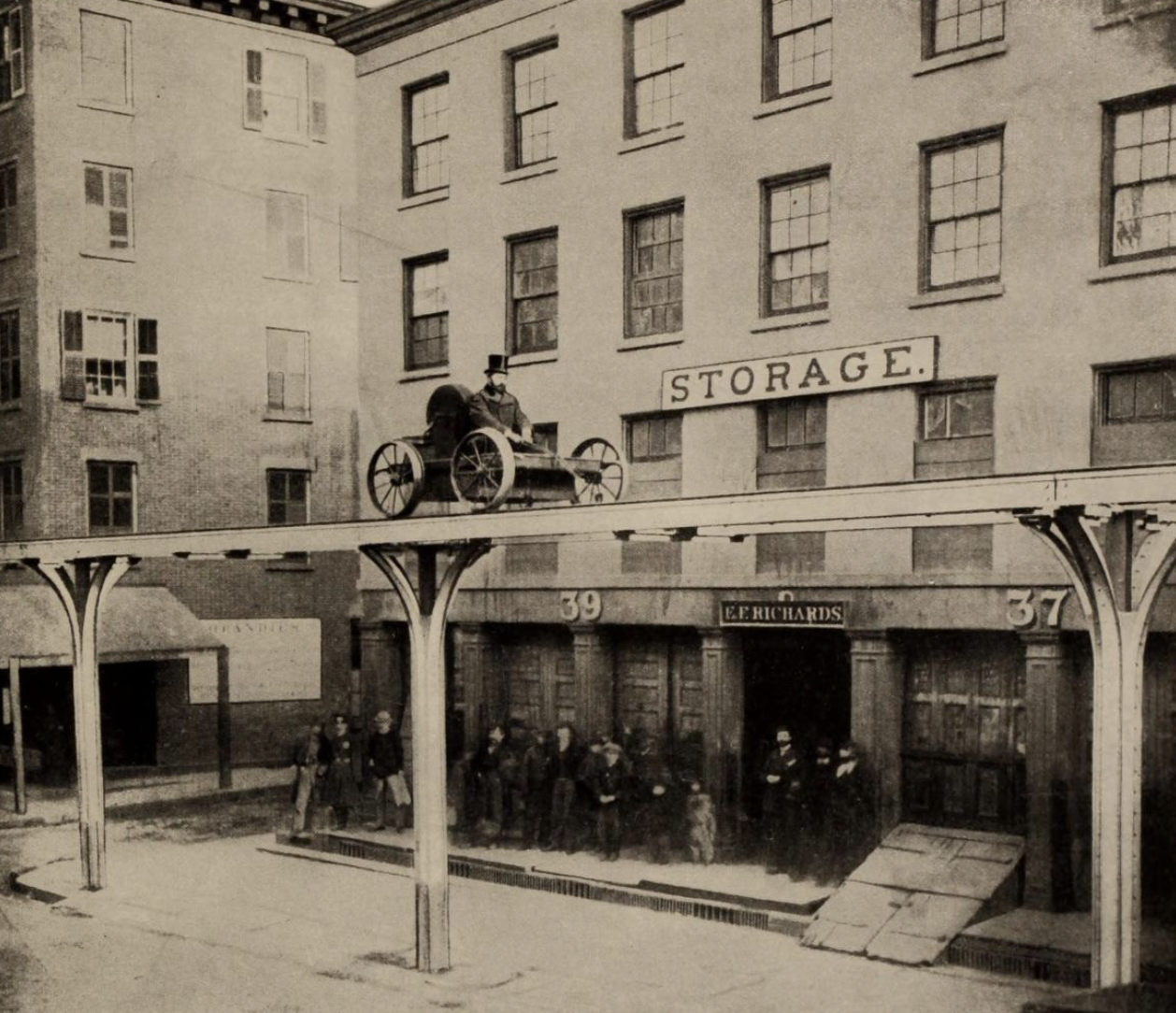
Engineer Charles T. Harvey demonstrating his experimental elevated line for investors, 1867. The West Side and Yonkers Patent Railway was incorporated in 1866, and the test section ran for several blocks along Greenwich Street. The car was pulled along the single track by a cable that ran between the tracks and was returned underground, powered by stationary engines.
The initial ride was successful, and the elevated track was extended from Cortlandt Street to 30th Street, with stations at Dey Street and 29th Street. However, the company faced legal difficulties and financial constraints, and the mechanical equipment broke down. The franchise to operate the line was bought in 1870, and the tracks were eventually incorporated into what became the 9th Avenue el.
From Transit in old-time New York by Alexander J. Wall, 1919.
Early Beginnings of the The 9th Avenue Elevated
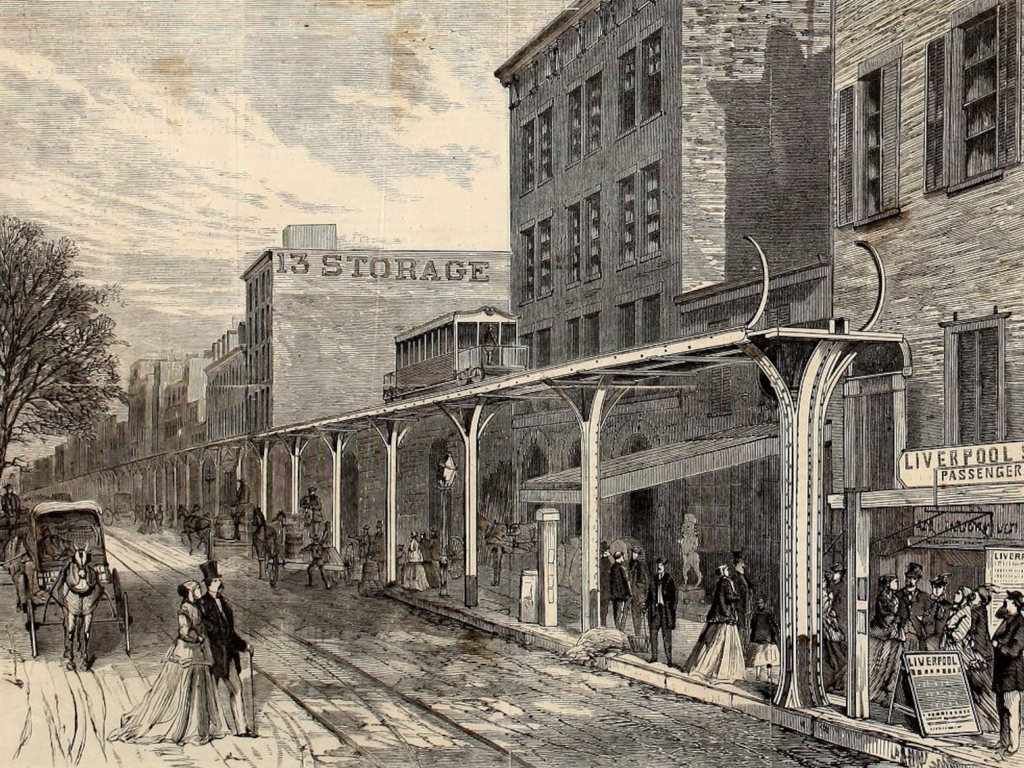
An early trial trip on the line, July 3rd, 1868. The description from Harper’s Weekly states:
“A trial trip of the new elevated railway in Greenwich Street was had on July 3, and the rapid speed which was attained on that occasion leads the friends of the enterprise to hope that the problem of rapid and safe locomotion through the crowded streets of the city has been solved… It is now in running order from the Battery to Cortlandt Street, and with the present machinery, the cars can be propelled, with little jar and oscillation, at the rate of 15 miles an hour. This speed was attained on this occasion; but the experiment thus far has developed many facts and improvements which will be added, and thus enable the projector to run the cars at a much more rapid rate.
This work was begun July 2, 1867, $100,000 being subscribed for the experiment. The State Commissioners on July 1, 1868, reported in its favor, declaring it a success, and the Governor authorized the completion of the road from the Battery to Spuyten Duyvil, and the work is to be at once hastened to completion. The Directors promise to finish it to the Thirtieth Street depot of the Hudson River Railroad by the first of 1869.”
From Harper’s Weekly, July 25, 1868, Volume 7. Number 604.
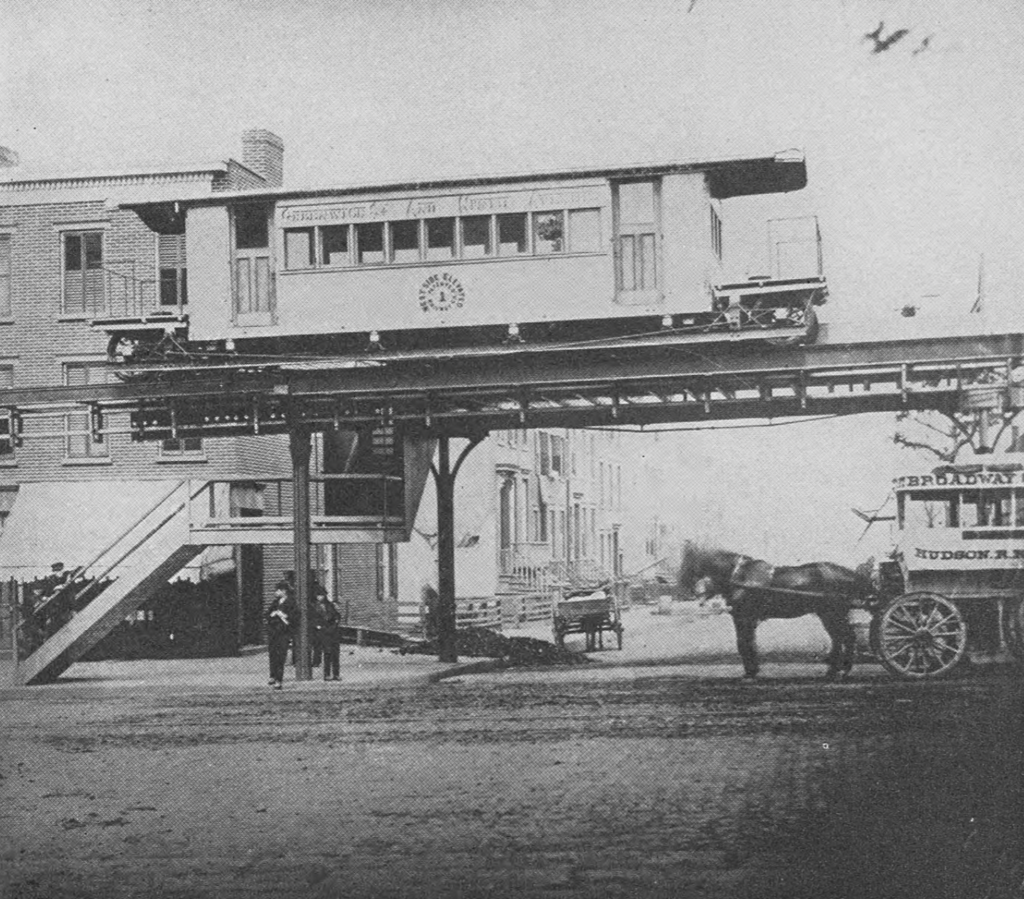
Passenger car number one at the 29th Street station, 1869. The mechanisms for the cable, which was manufactured by the Roebling Company, can be seen underneath the tracks.
From The New York Historical Society Quarterly Bulletin, Volume 18, Number 4, January 1935.
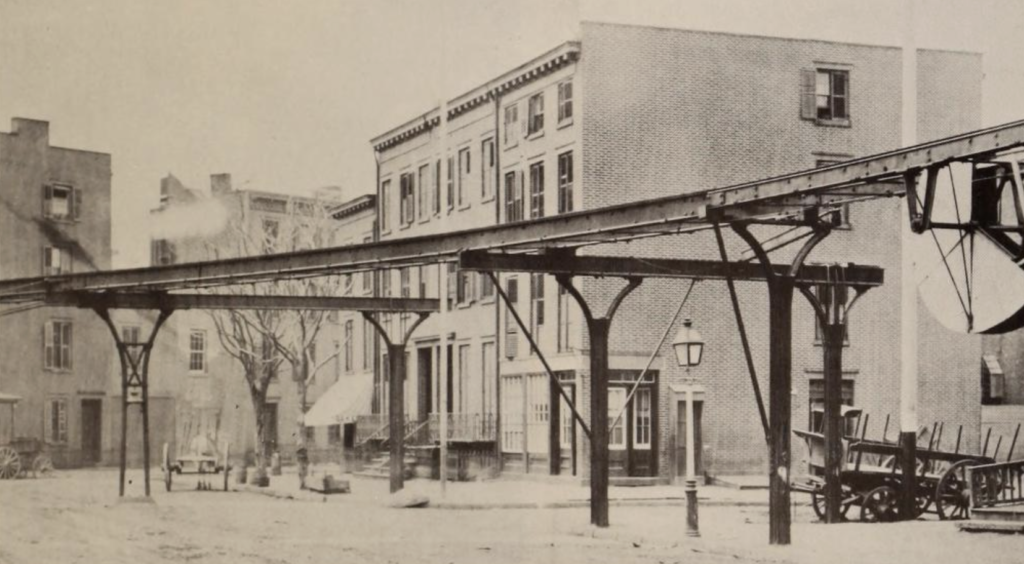
The elevated line turning from Greenwich Street up 9th Avenue at Little West 12th Street, 1869. There were four separate sections for the cables.
From The Tracks of New York, Number 3 by Paul Alan Kahn and Jack May.

The same junction, also in 1869, looking south as the el continued down Greenwich Street.
From The first elevated railroads in Manhattan and the Bronx of the city of New York by William Fullerton Reeves, 1936.

One of the experimental cars at 22nd Street, 1869. It is passing over one of the mechanisms that pulled the cable along. There were four separate sections that pulled the cable.
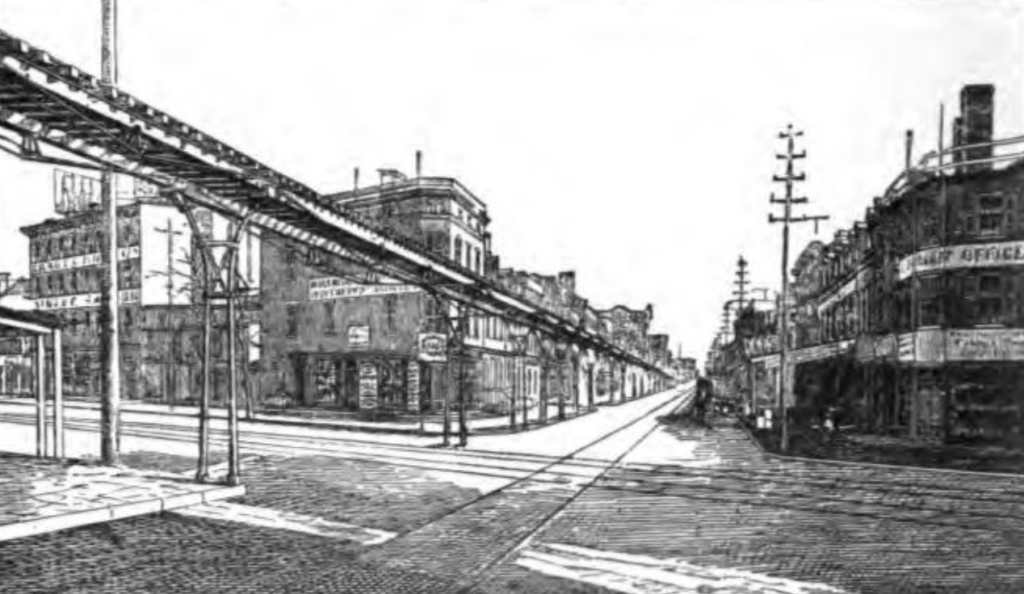
The elevated line at Canal Street, 1875. The street tracks perpendicular to the elevated go to the St. John’s Freight Depot.
From The most notable robbery of modern times by Stephen O. Jennings.
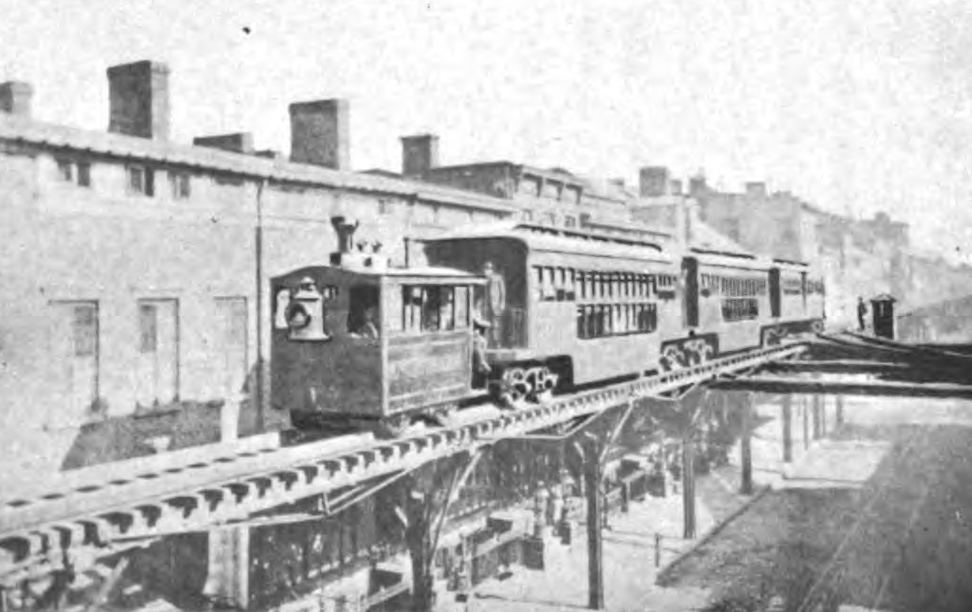
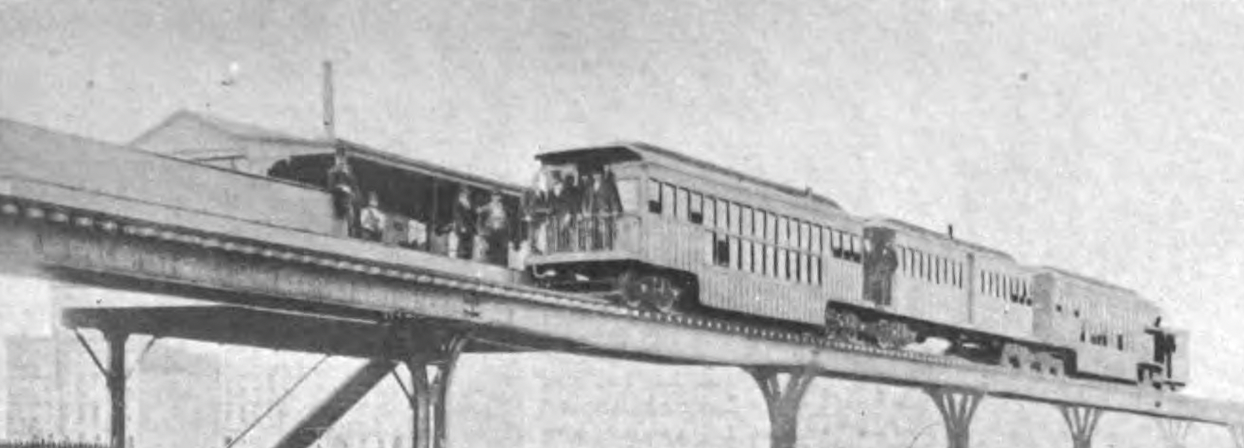
Two views of dummy engines and “shadbelly” cars on the line, c. 1878. Dummy engines were initially used to avoid spooking horses on the street below.
From Fifty years of rapid transit, 1864-1917 by James Blaine Walker.
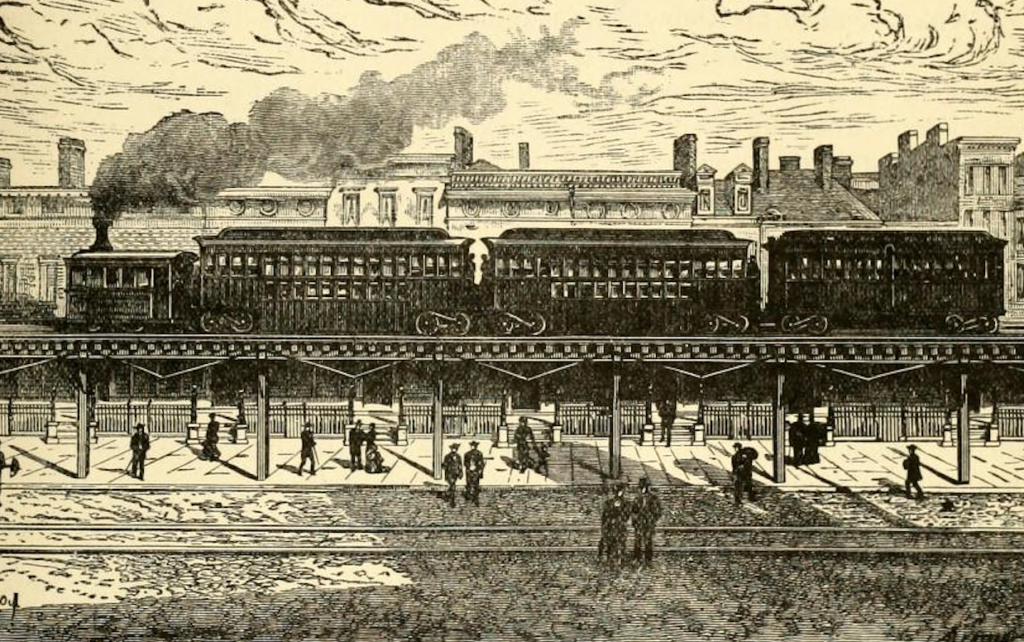
“Shadbelly” cars on the elevated, c. 1875. They were called such after their dropped “bellies,” as the middles had a lower center of gravity to assuage fears about the cars falling off of the elevated structure. They were phased out by the end of the decade.
From The Library of American History, Literature and Biography by Hamilton Wright Mabie, William Wilfred Birdsall, and Edward Everett Hale, 1904.
